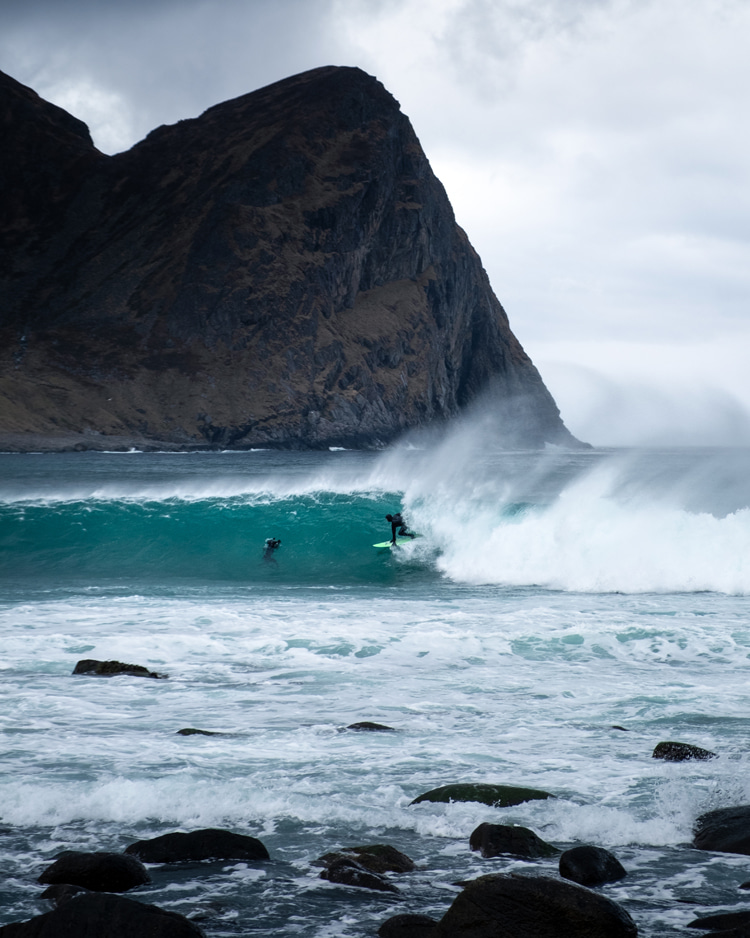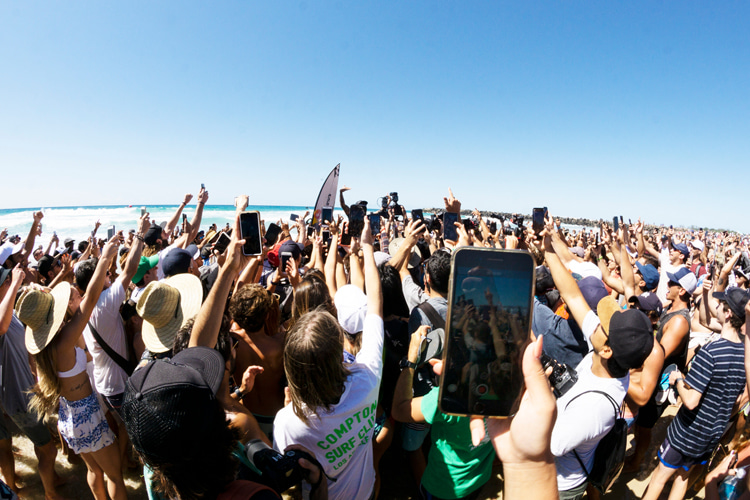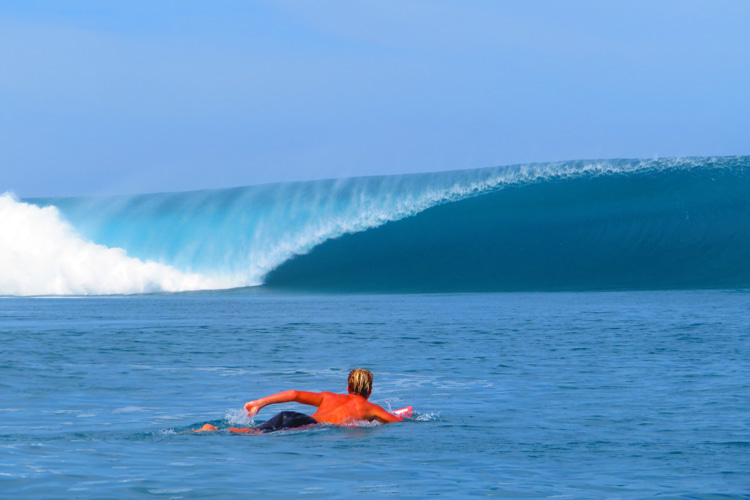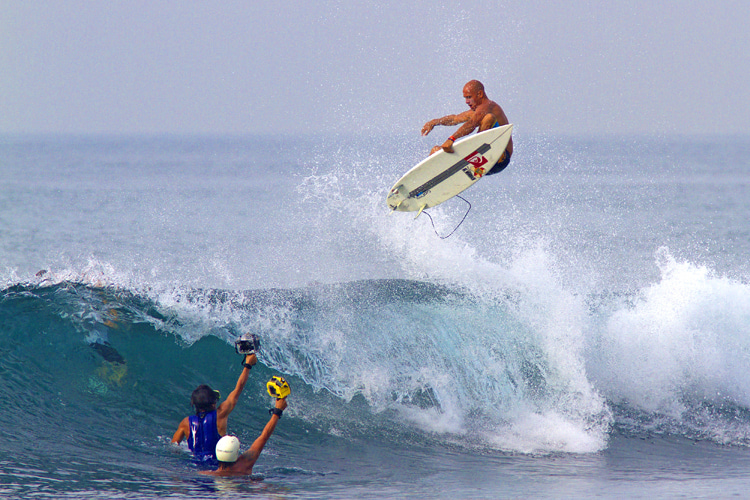Social media fooled us. They promised a world in which we could share the best of us, and we're slowly witnessing the death of what made surfing such an appealing sport and outdoor activity.
The banalization of surfing's unique essence and spirit is something surfers should really reflect on.
What are the main differences between the sport's global perception in 1980-2000 and 2000-2020?
The main change in the equation is the introduction of the internet variable and, more specifically, the rise of social media.
In the early 2000s, it started selling us the idea that we're all connected, closer than ever, through bits and bytes, filtered images, and pre-staged video clips.
Interactive digital platforms gave us the power to comment on each other's waves, bodies, gear, and lifestyles and the license to hurt, insult, and bully those who do not necessarily follow the standard and pre-determined social patterns.
Online social networks put an end to millions of real-life, person-to-person communication and the natural expression of human emotions and feelings.
People are enjoying less outdoor life and draining a large percentage of their day by staring at smartphones, tablets, or laptops.
While it is undeniable that social media allowed us to reach wider audiences, it also crushed the magic of searching for perfect waves and dreaming of a stellar session at our local break.

We must stay positive, though.
As the Nigerian poet and novelist Ben Okri once wrote: "Our future is greater than our past."
Should we go back to the pre-internet days when we had to wait a month for our favorite surf magazine?
Probably not. But we need to cherish and take care of what we've got.
Take a look at some of the impacts social media had on surfing as a sport and cultural phenomenon.
1. The Glorification of the Popcorn Video Clip
Between 1980 and 1990, surf videos were a rare commodity, available only on VHS tapes and Betamax tapes.
The chance to watch a world champion riding a wave would live in the memory of viewers forever.
It was a special moment that was scrutinized and dissected from the moment the surfer paddled into the wave until the end of his or her ride.
Recreational surfers would then try and replicate the tricks and maneuvers, just like they saw on TV.
Today, brands, athletes, event organizers, and anonymous surfers upload thousands of wave rides to social media on a daily basis.
And we watch them and scroll down endlessly until our brain freezes and moves to another topic of interest.
Watching surfing on social media is like eating popcorn in a movie theater.
2. The Trivialization of Greatness
In a not-so-distant past, some waves would stay in our memories forever.
They included tense and intense world title heats, Pipe Masters finals, unforgettable drops into Tahitian pits, remarkable performances at Peahi, and perfectly executed rides at Huntington Beach.
Surfers had their glorious moments, and these occasional events were frozen in time.
It could be a timeless barrel ride or a spectacular air reverse - but they were impressive, and they were seen as so by fans and non-surfers.
Today, surf greatness is disposable and irrelevant after 24 hours.
Have you broken the Guinness World Record for the largest wave ever ridden? Nice job. See you later.
Nobody cares anymore - achievements have become superfluous and obsolete after a couple of days. Why? Because we've been reformatted to move forward and scroll down.
3. The Stab of the Complete Wave Ride
A wave is always a special moment in a surfer's attempt to go from good to great.
Details matter. Surfers need to choose their positioning, pick the right wave, paddle for it at the right timing, take off nice and easy, perform a well-rounded bottom turn, and ride the wave to its end.
Social media has no patience for take-offs and whitewater runs.
It's all about the eye-catching air, the wipeout, or that deep moment inside the blue tube. The steps toward the flashy nanosecond are pointless.
Who cares if you need an excellent bottom turn to pull off the biggest aerial move ever shot on tape?
4. Looking Good: The New Universal Obsession
Do you often see surfers sharing the trivialities of their daily lives?
When was the last time a world surfing champion shared something terrible that happened to him or her recently?
Looking good on social media is the new formula for (apparent) success and (artificial) happiness.
Forget about mental health issues and disorders, financial problems, or family disagreements.
What you see is what you get. And if you only see smiles, tanned skins, and perfect waves, then there's something wrong.

5. The Quantification of Me
The first known use of the word selfie was in 2002. And that speaks for itself.
People - and surfers are no different - are increasingly obsessed with self-indulgence and others' perception of themselves.
In most cases, this unconscious behavior only reflects attention-seeking needs, low self-esteem, and social dependence.
Every post or picture surfers share on social media has a purpose.
Unfortunately, these global online platforms have transformed the impact our actions have into figures - the number of followers, views, likes, and shares.
But the beauty of surfing cannot be quantified.
It is something that can only be described, discussed, imagined, dreamed, and, ultimately, experienced.
6. The Loss of the Surf Star's Magic Aura
Why does an old-school rock star look and feel like a real rock star?
Why do common people admire and look up to their music idols or sports heroes?
Because some of them have kept their lives discreet and a secret to the majority of the public, including the media.
The more an icon or champion steps away from the spotlight, the more it generates interest, curiosity, and excitement.
While interactions with fans and the public are always a healthy thing to do and see, public personalities are often overexposed.
We've seen world surfing champions involved in useless - and sometimes foolish - controversies and debates that add nothing to their responsibilities as sportsmen, sportswomen, public figures, and role models.
7. The "Broadcastization" of the Surf Trip
Not long ago, surf trips were sacred voyages into the unknown in search of perfect waves.
The surf trip concept as an exploratory surfing adventure gave birth to dozens of movies, including the most beautiful surf film of all time, "The Endless Summer."
At the heart of surf travel is a variable that is slowly losing its original meaning - discovery.
Nowadays, smartphones not only guide us through the peaks and spots that have already been referenced but also dictate where we should go to get the best pictures and clips.
A couple of decades ago, we traveled to find surf; today, some travel to find photo ops in surfable spots.
Somehow, along the way, we lost the ability to live in the moment, keep the experiences for ourselves, and capture long-lasting memories with our eyes.

8. The Globalization of the Secret Spot
For a long time, magazines made sure they kept secret surf spots... a secret.
You would flip through the pages and read detailed descriptions of the wave, its unique characteristics, and mind-blowing riding sensations.
But the mystery surrounding these idyllic point breaks, secluded arctic beach breaks, and crystal clear water heavens remained unidentified.
With the advent of Google Maps, surf forecasts, and illustrated atlas of surf breaks, the secret spot is a near-extinct species.
Nazaré is on the cover of the New York Times, and Skeleton Bay videos hit several million views on YouTube.
9. The Death of the Surf Magazine
One by one, they all fall off.
Surf magazines are soon to be a thing of the past.
When the "Bible of the Sport" loses its print edition after 60 years on the shelves, everything is possible.
Surfers have lost their interest in reading even the shortest articles.
The surf magazine concept - as we know it - is dead and might not be given a second life like vinyl records.
Words by Luís MP | Founder of SurferToday.com
